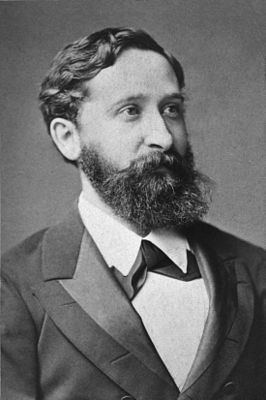Name Adolf Meyer | ||
 | ||
Books The Distribution of the Negritos in the Philippine Islands and Elsewhere | ||
Education University of Gottingen | ||
Adolf Bernhard Meyer (11 October 1840, Hamburg – 22 August 1911, Dresden) was a German anthropologist, ornithologist, entomologist, and herpetologist. He served for nearly thirty years as director of the Königlich Zoologisches und Anthropologisch-Ethnographisches Museum (now the natural history museum or Museum für Tierkunde Dresden) in Dresden. He worked on comparative anatomy and appreciated ideas from evolution, and influenced many German scientists by translating the works of Darwin and Wallace into German in 1858. Influenced by the writings of Wallace with whom he interacted, he travelled to Southeast Asia, and collected specimens and recorded his observations from the region.
Contents

Biography
Meyer was born in a wealthy Jewish family in Hamburg and was educated at the universities of Göttingen, Vienna, Zürich and Berlin. He became director of the Anthropological and Ethnographic Museum in Dresden in 1874 and continued in that position until his retirement in 1905. He studied medicine in Zurich and published a thesis on electrical stimulation of the nerves. In 1858 he translated the works of Charles Darwin and Alfred Russel Wallace into German. Enamoured by Wallace's travelogues, he travelled in the East Indies at the end of the nineteenth century. He collected numerous specimens. Meyer's East Indies bird collection and beetles and butterflies collected in Celebes and New Guinea are in Staatliches Museum für Tierkunde Dresden. Most of the specimens that he collected were sold to the Museum für Tierkunde Dresden. In 1874 he succeeded Heinrich Gottlieb Ludwig Reichenbach as director at the same museum. Among his inventions were the "Dresden Case" made of iron and glass that he designed to store specimens. It is believed that he held the post until 1904 when anti-semitism led to his suspension. He retired in 1906. He also studied amphibians and reptiles, describing several new species of lizards endemic to New Guinea. In addition to birds he made a study on primates. He described Tarsius sangirensis, the Sangihe tarsier, a small primate that he found in Indonesia in 1897. His knowledge of English allowed him to collaborate with many researchers such as L. W. Wiglesworth with whom he wrote The Birds of Celebes and the Neighbouring Islands (1898). His two volume studies on the skeletons of birds was dedicated to Professors Max Fürbringer and Henri Milne-Edwards.
The brown sicklebill (Epimachus meyeri) was named after him when the species was discovered in 1884. He published a classification of birds, among them the Carola's parotia (Parotia carolae), the Stephanie's astrapia (Astrapia stephaniae), the red-capped flowerpecker (Dicaeum geelvinkianum), and the takahe (Porphyrio hochstetteri).
